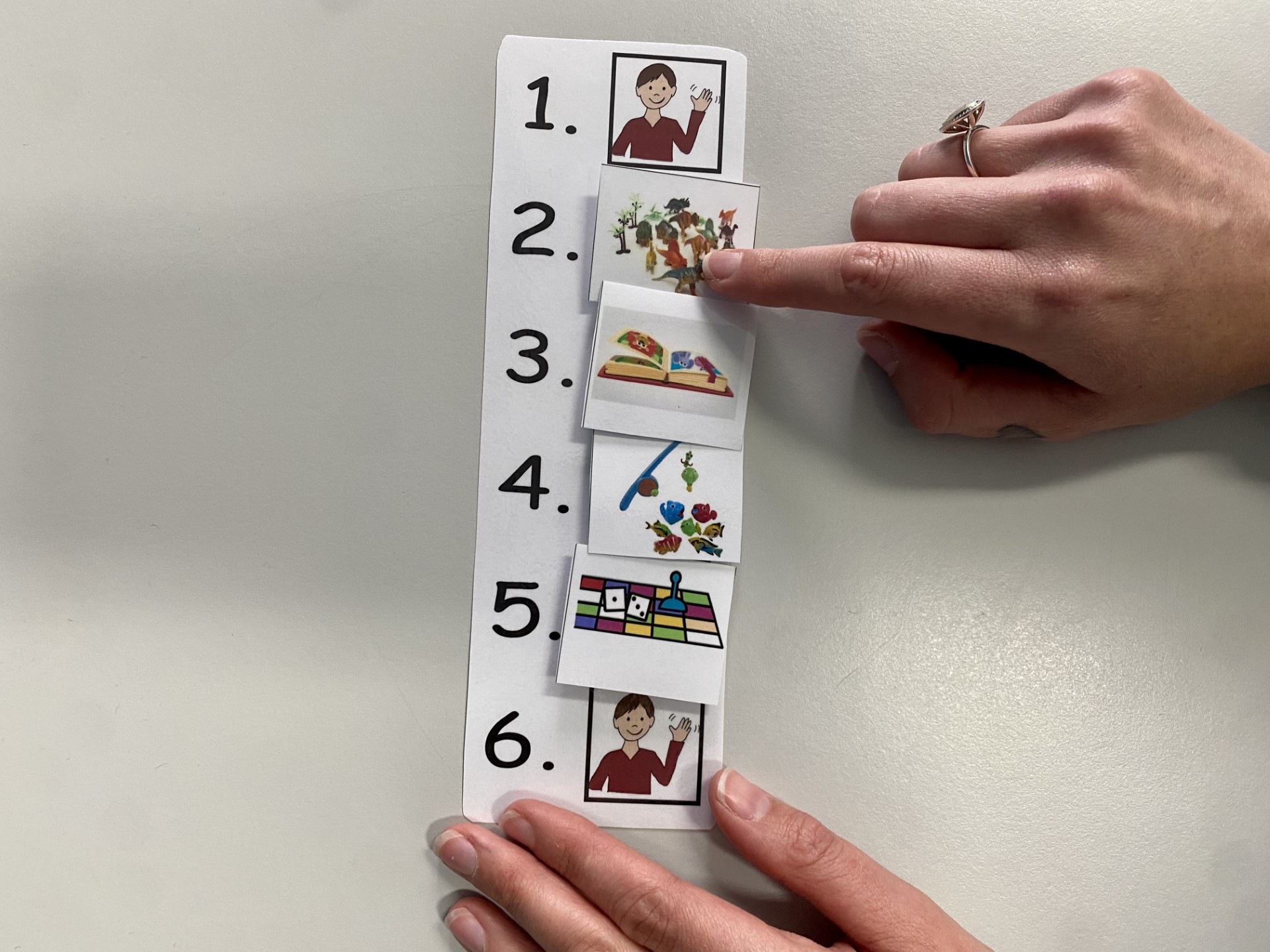Visual schedules give information such as:
- What is happening today?
- Is there anything unusual happening today?
- What am I doing next?
- They can be for daily routines, parts of the day or to schedule up free time.
- Calendars can be used to highlight a major event for that day like swimming lessons.
Visual schedules are not tools for compliance, they are best used for accessibility. They can help reduce anxiety and confusion and increase independence. Some children have higher levels of anxiety about changes in routine. Using a flexible, individualised visual schedule can prepare your child and their environment for the change.
Visual schedules are a way to communicate expectations while helping your child meet their needs.

When creating a visual schedule for your child consider the following:
- Does your child understand what is expected of them?
- What would make this activity more accessible for my child in this moment?
- What unmet need or reduced skill level is preventing my child from completing the desired task?
When using visual schedules to teach kids that, while the day is structured, there are times that are flexible, and changes can still happen throughout the day. It is important to intentionally teach children (through planned events) how to cope with changes in the schedule so that they do not become so rigid that they cannot accept deviations in the routine.
Visual schedules are not tools for us - they are tools for our children. When we use schedules as a tool for accessibility, we no longer focus on making children do things they do not want to do. Instead, we help make clear to them what is expected, and then find ways to make what is expected enjoyable, successful, attainable, engaging, appropriate, and accessible.
Please visit this websites for more information on creating a visual schedule for your child: Visual schedule (education.qld.gov.au) and Visual schedules & supports: autism | Raising Children Network
Download the Using Visual Supports factsheet.




